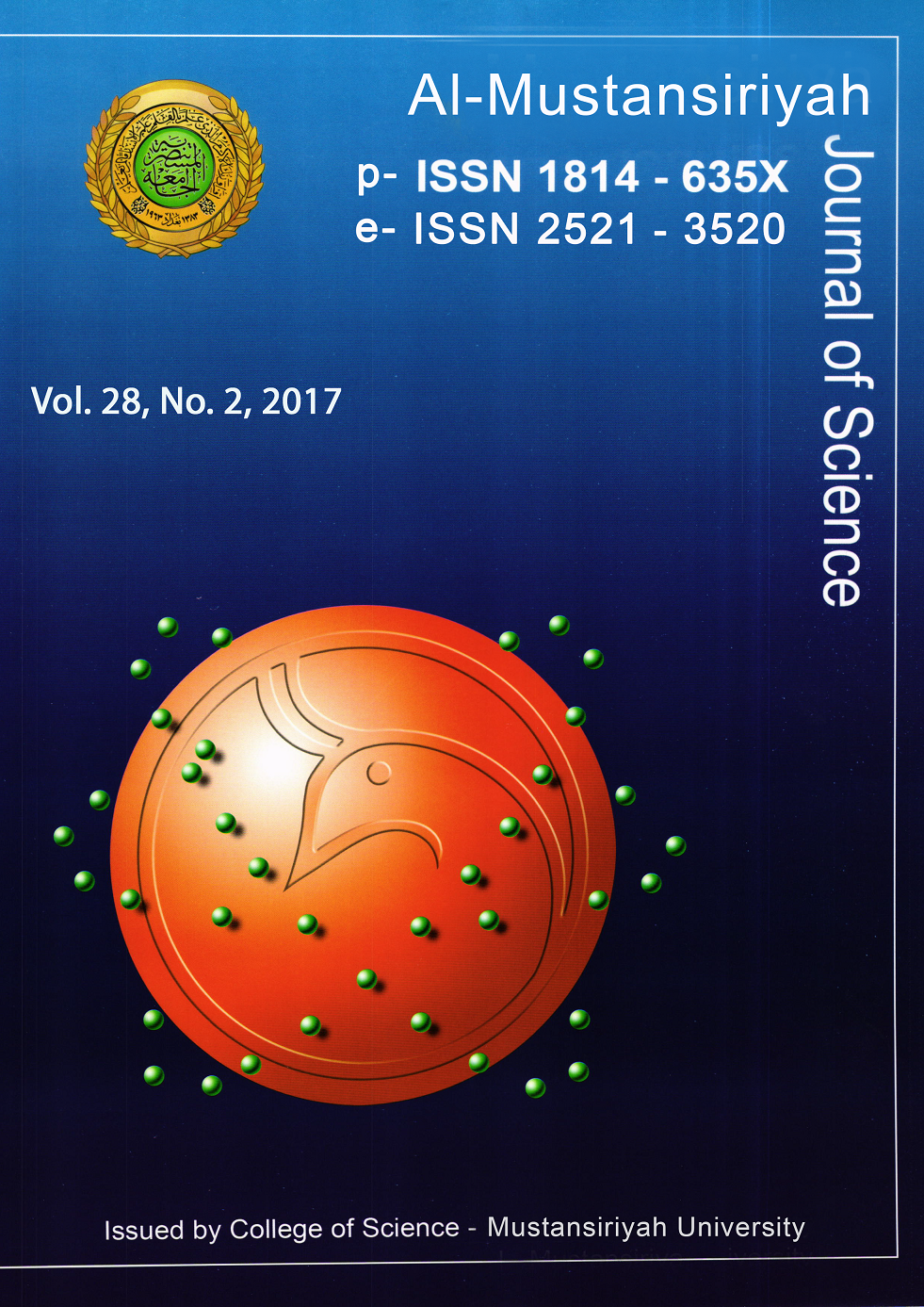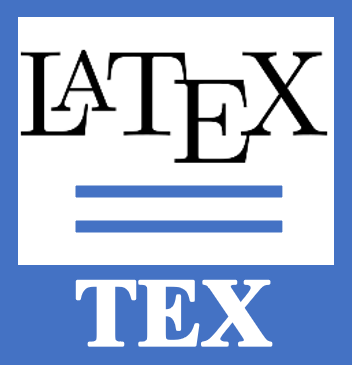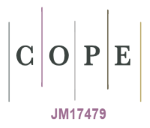Preparation and Characterization of TiO2 Nanostructure by TiCl4 Hydrolysis with Additive NaOH
DOI:
https://doi.org/10.23851/mjs.v28i2.506Keywords:
TiO2 nanostructures, TiCl4, hydrolysis.Abstract
Titanium dioxide (TiO2) nanostructures were synthesized via the hydrolysis of TiCl4 in alcohol / water solution/with sodium hydroxide solution in the ice-bath (0-5 ◦C). The particles were char-acterized by using X-ray diffraction technique (XRD), spectroscopy of Ultra Violet-Visible (UV / Visible) and infrared (FT-IR), atomic force microscope (AFM) and scanning electron micro-scope (SEM) analysis were used in order to gain information about the material, morphology, size and the shape of the particlesDownloads
References
S. M. W. C. a. D. B. M. R. Hoffmann, " Environmental Applications of Semiconductor Photocatalysis," Chem. Rev., vol.95, no.1, pp.69-96, 1995.
A. P. K. Z. J. P. a. P. Y. S. A. Sher Shah, " Green synthesis of biphasic TiO2-reduced graphene oxide nanocomposites with highly enhanced photocatalytic activity," ACS Appl. Mater. Interfaces, vol.4, pp.3893-3901, 2012.
R. B. Z. a. L. Gao., "Synthesis of nanosized TiO2 by hydrolysis of alkoxide titanium in micelles. ," Eng. Mate, vol.573, pp.224-226, 2002.
R. V. a. R. S. R. Sharmila Devi, "Synthesis of Titanium Dioxide Nanoparticles by Sol-Gel Technique," I. J. I. R. S. E. T., vol.3, no.8, pp.15206-15211, 2014.
D. O. A. C. -. G. a. S. J. -. S. N. Castillo, "Structural and morphological properties of TiO2 thin films prepared by spray pyrolysis. ," Revista Mexicana De Física, vol.50, no.4, p.382, 2004.
B. L. B. a. M. A. Anderson., " Peptization Process in the Sol-Gel Preparation of Porous Anatase (TiO2). ," Chem. Mater., vol.7, pp.1772-1778, 1995.
T. I. a. X. S. J. -G Li., " Anatase, brookite, and rutile nanocrystals via redox reactions conditions: phase-selective synthesis and physicochemical properties. ," J. Phys. Chem. C, vol.111, pp.4969-4976, 2007.
M. -S. Z. J. -M. H. a. Z. Y. K. -R. Zhu, "Size effect on phase transition sequence of TiO2 nanocrystal. ," Mater. Sci. Eng., vol.403, pp.87-93, 2003.
G. Brady, Materials Handbook, New York: McGraw-Hill., 1971.
C. L. A. C. Y. Z. a. D. F. L. Shi,"Morphology, and structure of nanosized TiO2 particles synthesized by gas-phase reaction. ," Materials Chemistry and Physics, vol.66, no.51(1), pp.51-57, 2000.
K. S. Mazdiyasni., " Powder synthsis from metal-organic precursors," Ceram Int., vol.8, no.2, pp.42-45, 1982.
X. X. a. J. N. J. Zhang, " Hydrothermal hydrolysis synthesis and photocatalytic properties of nano-TiO2 with an adjus table crystalline structure. ," Journal of Hazardous Materials, vol.176, pp.617-622, 2010.
B. X. W. M. Y. a. L. L. Li, "Preparation and characterization of nano-TiO2 Powder," Mater. Chem. Phys, vol.78, pp.184-188, 2002.
E. I. T. D. S. S. D. M. C. R. V. P. G. P. a. H. I. N. R C Suciu, "TiO2 thin films prepared by sol - gel method. ," Journal of Physics: Conference Series, vol.182, pp.1-4, 2009.
D. W. B. a. M. R. H. C. Kormann, " Preparation and Characterization of Quantum-Size Titanium Dioxide. ," Journal of Physical Chemistry, vol.92, pp.5196-5201, 1988.
B. -Y. H. a. C. -M. T. C. Su, "Sol-gel preparation and photocatalysis of titanium dioxide. ," Catalysis Today, vol.96, no.3, pp.119-126, 2004.
P. L. a. B. N. K. Thamaphat, "Phase Characterization of TiO2 Powder by XRD and TEM. ," Nat. Sci., vol.42, pp.357-361, 2008.
M. U. f. N. K. a. E. h. M. Akarsu, "A Novel Approach to the Hydrothermal Synthesis of anatase titania Nanoparticles and the Photocatalytic Degradation of Rhodamine B," Turk J Chem, vol.30, no.3, pp.333-343, 2006.
B. D. Cullity, Elements of X-Ray Diffraction, Addison-Wesley, 1978.
Y. A. A. H. A. J. a. Y. K. Z. K. Sarmad S, " Annealing Effect on the Growth of Nanostructured TiO2 Thin Films by Pulsed Laser Deposition (PLD)," Eng. and Tech. Journal, vol.31B, no.4, pp.460-470, 2013.
S. M. A. R. R. K. Madhusudan Reddy, "Bandgap studies on anatase titanium dioxide nanoparticles. ," Materials Chemistry and Physics., vol.78, pp.239-245, 2002.
Downloads
Key Dates
Published
Issue
Section
License
(Starting May 5, 2024) Authors retain copyright and grant the journal right of first publication with the work simultaneously licensed under a Creative Commons Attribution (CC-BY) 4.0 License that allows others to share the work with an acknowledgement of the work’s authorship and initial publication in this journal.






















